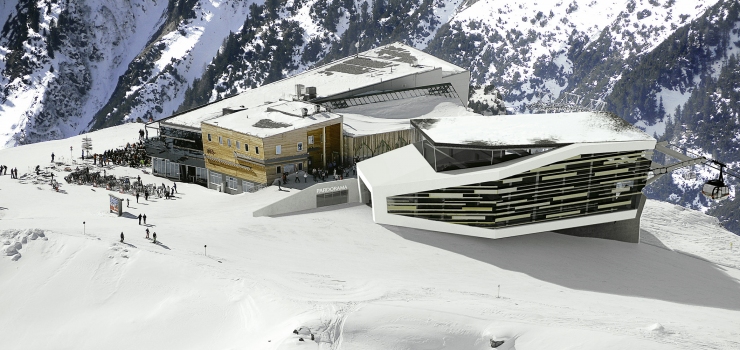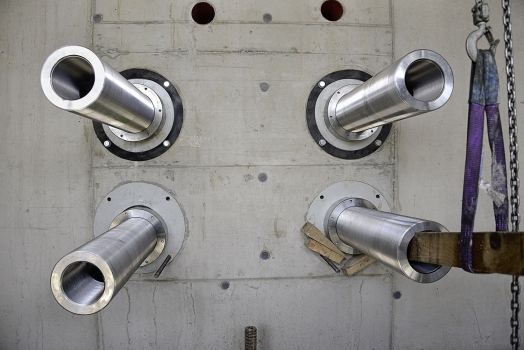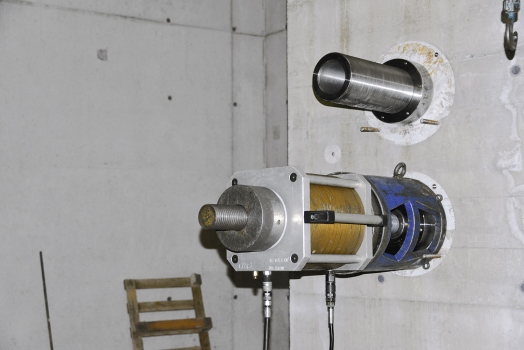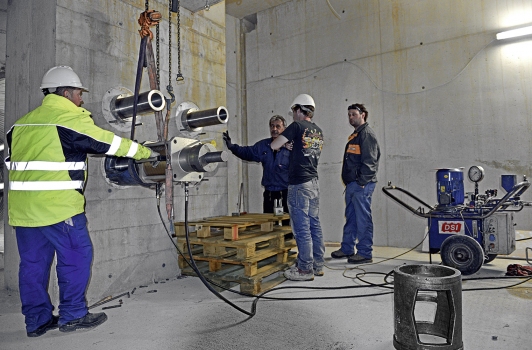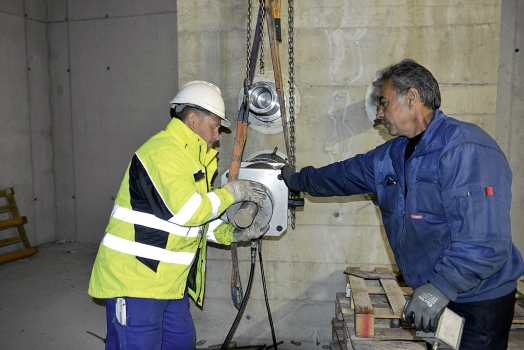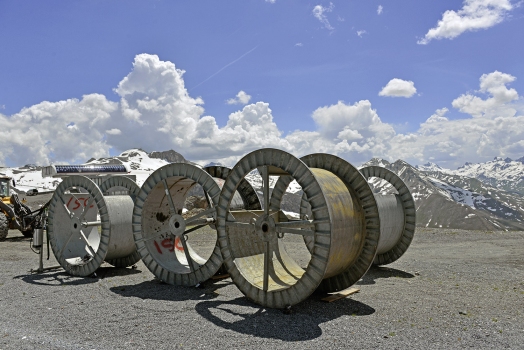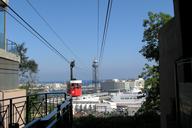Pardatschgrat gondola lift sets world record for height difference
A wind resistant tricable gondola lift has been opened on 27 November 2014 in the Austrian skiing resort of Ischgl. The new Pardatschgrat gondola lift rises 1,251 m and by this sets a new height difference world record for tricable gondola lifts. It leads directly from the eastern town center of Ischgl to the 2,616 m high Pardatschgrat.
Media
The Pardatschgrat is known for its difficult geological conditions; furthermore, the mountain station is located in a permafrost zone. The mountain station is built as an eastern expansion of the existing cable lift's mountain station. In order to be prepared for possible settlements, the station is being built on several individual foundations that can be readjusted using heavy duty hydraulic jacks. Furthermore, the special geological situation required that the complete mountain station be tied back using post-tensioning tendons.
In order to minimize potential shifting, the new mountain station was tied back approx. 140 m using post-tensioning tendons that run through a tunnel. The maximum possible displacement was calculated to measure up to 1.5 m. Therefore, the design of the tendons used had to take into account a certain yield path. In case of conventional tendons with strands and wedges, the problem is that the clamping indentations of the wedge bite are transferred into the free length when the tendon is detensioned. This is not allowed because the wedge bite on a post-tensioned strand represents a kind of predetermined stress riser or potential breaking point.
Consequently, DSI supplied four Type SUSPA Systems Wire EX 66 Wire Tendons in lengths of 153 m for tying back the new mountain station. On Wire EX Tendons, the wires are anchored by forged heads and different threaded steel components. To reduce the post-tensioning force, the support nut can simply be unscrewed further from the clamping sleeve. Special, longer clamping sleeves with a larger yield path were produced for this project. At first, the tendons were not tensioned to their full post-tensioning force. Should the mountain move there will be a certain built-in excess capacity until the permissible post-tensioning force is reached. If there are additional movements, a tensioning jack must be placed on the anchorage and the support nuts must be slightly unscrewed from the clamping sleeves.
References
Structure Types
- About this
data sheet - Product-ID
7330 - Published on:
20/04/2016 - Last updated on:
17/11/2021

